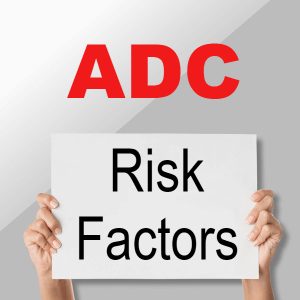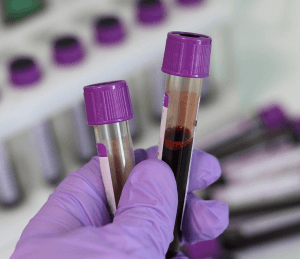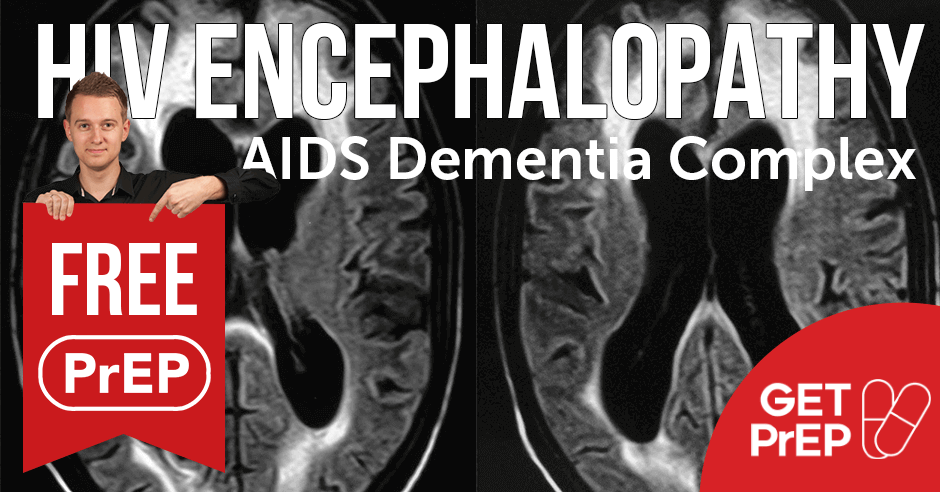AIDS dementia complex — sounds frightening, doesn’t it? HIV-induced encephalopathy is a serious problem for many people who live with the human immunodeficiency virus. But this is not the reason to burst into tears, if you know what to do. We will tell you about an easy and affordable way to address this challenge.
HIV is a dangerous virus that affects the immune system in our bodies. When untreated, HIV can lead to irreversible consequences. The statistics are frightening, and the latest information given by UNAIDS is about 2017. As of then, there are more than 36 million people living with this disease, with 1.4 – 2.8 million newly infected patients yearly. Almost one million dies every year because of HIV-related illnesses. However, in recent years, scientists have invented a treatment for the virus.
HIV leads to AIDS — acquired immunodeficiency syndrome. Once entered the human body, it stays there for the person’s whole life, and cannot fully be cured. It attacks the immune system destroying the CD4 cells, also known as T-cells, thus reducing the number of our defenders. Progressing HIV makes the body unable to struggle against opportunistic infections, which are those that always tag along behind the weakened immunity, as well as infection-related cancers.
The virus came from chimpanzees, which while hunting came into contact with the infected blood, and it then first appeared and spread among African people. It came to the USA in the 1970s, and since then it has affected millions of people. Men who have sex with men are still in the biggest danger, as 66% of all sexual HIV transmissions happen within this group, and only 24% — through heterosexual contact. Injecting drugs also increases the risk of becoming HIV infected. The U.S. statistics look a little bit more optimistic, because this infection remains the disease of poor countries and small segments of population. However, we lost more than 15,000 Americans in 2015 because of HIV.
Nowadays, we still haven’t found the final cure to fully drive the virus out of the body. Meanwhile, we already know how to keep it under control. People with HIV can live a normal life, with proper medical care, of course. There are three stages of HIV disease: acute HIV infection, clinical latency, and AIDS. The first period starts when HIV virus enters the body, and it is characterized by influenza symptoms. During this period, people are very contagious, and the bad thing is that many don’t even know they are infected. The second stage, also known as HIV dormancy, doesn’t show special symptoms, and the latent period lasts for 10 or more years, while people with AIDS usually don’t live longer than three years.
What Is HIV Encephalopathy?
HIV, together with its last stage, AIDS, are the often cause of neurological complications. One of them is HIV encephalopathy, or the AIDS dementia complex (ADC), a malady that is directly related to the virus. The Encephalitis Society gives the following definition for this illness: it is a result or a long-term impact of the human immunodeficiency virus on the brain, and the damage caused by it. Doctors may diagnose AIDS immediately when they observe this illness, which is characterized by the degradation of memory, thinking, emotions, attention, and other cognitive functions. It also leads to the ailments of movements, and behavior dysfunctions.
ADC usually appears on the latest stages of AIDS, when the number of CD4 lymphocytes falls lower than 200 cells per microliter. A person gradually becomes clumsy and weak, loses mobility, and their mental processes become disrupted. 50% of positive patients had HIV encephalopathy symptoms prior to their death, before HAART, or highly active antiretroviral therapy, was discovered in the middle of the 1990s.
Currently, the total ADC disease prevalence among HIV+ patients in the Western world is about 37%. In addition, 30-40% of patients have milder forms of the disease. HAART helps to avoid progressive dementia, but there are chronic and fluctuating forms still widely found in HIV patients. In the USA at this time, 33% of people using ART have neurocognitive impairment with no symptoms, 12% have minor dysfunctions, and 2% have HIV-associated neurocognitive disorder (AIDS dementia complex).
Signs and Symptoms of HIV-Associated Dementia

- a person cannot work productively;
- he or she cannot concentrate on something long enough;
- people experience problems with learning new things;
- they think slowly, with noticeable difficulties;
- such patients become forgetful, absent-minded, and apathetic;
- their sexual desire disappears, they do not communicate with other people, and they get depressed.
In more severe forms, the illness is expressed in sleep disorder and psychosis, which are followed by extreme exaltation or anxiety, hyperactivity, reality contact loss, inappropriate reaction to surroundings, hallucinations, and seizures. When left untreated, those problems can worsen and lead to a vegetative state, when a person is unable to interact with the environment, take care of oneself, and understand what is happening around them. The total psycho emotional pressure on the family of HIV dementia patients is huge. Having a cognitive dysfunction and a mental disorder, those people can behave riskily by not following the regime of treatment. There are support groups where everyone can find help from those who were in this situation.
Understanding Causes and Risk Factors
A high viral load and low quantity of T-cells is the reason for AIDS dementia in the advanced stages of HIV. ADC is not caused by the opportunistic infections, it is the result of human immunodeficiency virus influence itself. The pathophysiology of the disease looks like this:
- the HIV infection uses lymphocytes and macrophages to enter the brain;
- it also gets into the central nervous system (CNS for short) in its original form, and with the infected cells of the blood vessels;
- then, the virus starts replicating itself, and thus killing brain cells — neurons and neuroglia;
- this leads to the production of neurotoxins, which has negative effects on brain. The virus can also damage the CNS cells itself, with the proteins on its membrane, and develop brain inflammation, or encephalitis.

- old age;
- decreased amount of CD4 cells;
- higher levels of HIV copies;
- reduced level of hemoglobin;
- hepatitis C;
- low weight;
- even the female gender.
Acute illnesses, like pneumonia, or poor tolerance to medications do not make the situation better, either. As a rule, people without medical viral suppression have a high risk to end up with ADC. The interesting fact is that people who inject drugs are not in the group of those with a higher risk.
How to Diagnose This Disorder?
It’s really important to reveal the disease in its early stages. An HIV-infected person should regularly visit a doctor, and the signs of starting dementia can be determined by behavioral, motor, and cognitive symptoms. However, it is good to know that these signs and manifestations may stem from other maladies, for example, various infections, troubles with metabolism, Parkinson’s or Alzheimer’s diseases, stroke, brain cancer, etc.
We do not have any single test that can detect HIV encephalopathy in humans. Establishing this diagnosis is more based on the process of elimination, when the other causes of the disorder are excluded. The final conclusion must be made by an experienced specialist, based on patient’s medical records, the results of laboratory tests, an examination of the physical and mental status, scans of the brain, possibly rachicentesis, and the analysis of stage characteristics. We will talk about them a bit later.
Examinations and Tests to Detect AIDS Dementia Complex

- computer tomography (CT) and MRIs identify brain changes that make the diagnosis of ADC obvious. Scanning shows the brain atrophy that is inherent to AIDS dementia complex, and negative changes in different parts of the brain. These images help doctors exclude other conditions such as strokes, tumors, or infections. This kind of testing should be repeated from time to time, because the situation of ADC can worsen;
- laboratory blood tests do not confirm an ADC diagnosis, but they help exclude other conditions that give similar symptoms;
- the analysis of cerebral fluid by a spinal tap can reveal changes that show the dementia development process;
- electroencephalography shows the brain’s electrical activity, which slows down the late stages of the disease;
- neuropsychological testing is the most exact method of studying the cognitive abilities. Examining memory, mental alertness, time and space orientation, speech, abstract thinking, etc., give a clear picture of the thinking and intellectual skills of the patient. Such tests have to be done by an experienced neuropsychologist.
All these methods can give more or less a complete image of the disease’s progress, and help choose the right treatment.
HIV Dementia Stages
This gradation is currently used mostly as a research instrument. There are five stages that determine the severity of the impairment:
- stage 0 has two phases: the zero phase shows normal motor and mental functions of the patient. On the 0.5 (equivocal) stage, some minimal dysfunctions, such as slow eye and extremity movements, or snout reflex are sometimes noticed. In these stages, the ability to work and perform everyday activities is not disrupted;
- stage 1 (mild): the person can still move without anybody’s help and carry on everyday chores, except difficult tasks. However, there are signs of motor and mental ailments, and neuropsychological testing indicates worsening results;
- stage 2 (moderate): a person can’t work and has difficulties with complex everyday activities, but is still able to take care of him/herself;
- stage 3 (severe): a patient has serious mental and motor problems, and is incapable of self-care. Such patients are unable to realize their surroundings, have very slow reactions, and can’t keep up with conversations; they cannot walk without support and become very clumsy;
- stage 4 (end stage): a patient is close to a vegetative state, when speech and social and mental abilities are almost absent. A person can’t control his/her physical state, and defecation and urination are uncontrolled.
Every healthcare specialist has to remember that although cases of acute ADC have become rarer over the years after the invention of HAART, mild symptoms still occur in people with HIV. About 30% of people with non-symptomatic HIV, and 50% of AIDS patients, have this disorder.
Prevention and Treatment of AIDS Dementia

The patient should stay physically and mentally active as long as possible. Daily physical exercises, social activity, solving puzzles, handicrafts, and meeting with relatives and friends will keep the mind and emotions on a proper level, and increase life expectancy and quality. Nutritional therapies are also useful. Specific symptoms related to neuropsychological problems, such as depression, anger, or delusions, can be treated with antidepressant drugs, of course, under professional control. Antiretroviral therapy protects people from developing the disease, and partly or completely mitigates the symptoms. There is no other prevention of the AIDS dementia complex. If you start treating the virus in the early stages, you’ll prevent most of the devastating consequences, and possibly reduce the dementia level from more than 50% to 10%.
So, do we really have to cure the illness only after it affects the brain, or can we do something to make our organisms resistant to the virus? Yes, we can! In our online pharmacy, BuyPrEPOnline, you will find remedies for pre-exposure HIV prophylaxis, which will help you live a happy life without a fear of AIDS.
These preparations do not let HIV replicate in the cells of the human body, thus preventing the infection. Even if you come into contact with an infected person, you will not have the illness. You can have a supply for half a year for only $299! Medicines in the local pharmacy are much more expensive, but they are not more effective! Our drugs are equivalent to those sold by prescription. And they have more benefits other than their low cost. You get a 10% discount for Bitcoin payments, and we’ll send you a gift with every package delivered — 10 dollars for your next purchase. Protect yourself with BuyPrEPOnline, live and love to the fullest!


